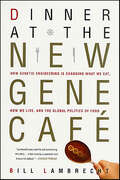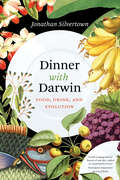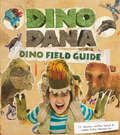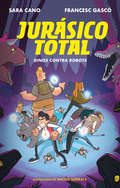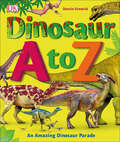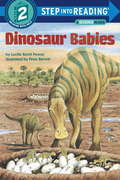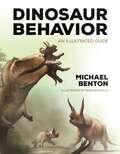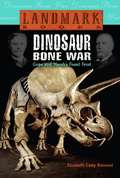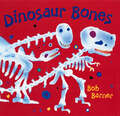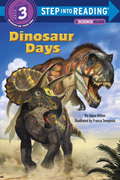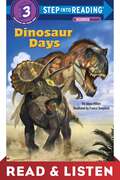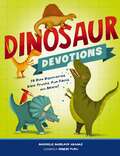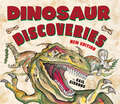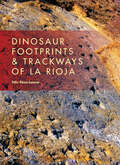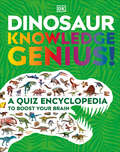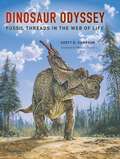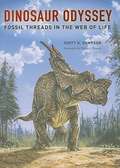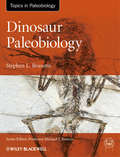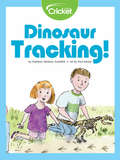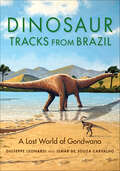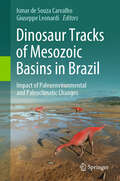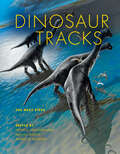- Table View
- List View
Dingos (Australian Animal Discovery Library)
by Lynn M. StoneFrom the book Jacket: Describes the physical characteristics, behavior, natural habitat, and relationship to humans of the Australian wild dog known as the dingo THE AUSTRALIAN ANIMAL LIBRARY Discover six of the weird and wonderful animals of Australia, the island continent "down under." Read about their curious habits, their conflicts with peoplt and their future. Crocodiles Dingoes Kangaroos Koalas Tasmanian Devils Wombats
Dinner at the New Gene Café: How Genetic Engineering Is Changing What We Eat, How We Live, and the Global Politics of Food
by Bill LambrechtThe definitive book on the rise of biotechnology and genetic modification in the world's food supply, a growing topic of fierce international debate.Biotech companies are racing to alter the genetic building blocks of the world's food. In the United States, the primary venue for this quiet revolution, the acreage of genetically modified crops has soared from zero to 70 million acres since 1996. More than half of America's processed grocery products-from cornflakes to granola bars to diet drinks-contain gene-altered ingredients. But the U.S., unlike Europe and other democratic nations, does not require labeling of modified food. Dinner at the New Gene Café expertly lays out the battle lines of the impending collision between a powerful but unproved technology and a gathering resistance from people worried about the safety of genetic change."Should be required reading for anyone who eats" --Kirkus Reviews (starred review)
Dinner with Darwin: Food, Drink, and Evolution
by Jonathan SilvertownWhat do eggs, flour, and milk have in common? They form the basis of waffles, of course, but these staples of breakfast bounty also share an evolutionary function: eggs, seeds (from which we derive flour by grinding), and milk have each evolved to nourish offspring. Indeed, ponder the genesis of your breakfast, lunch, or dinner, and you’ll soon realize that everything we eat and drink has an evolutionary history. In Dinner with Darwin, join Jonathan Silvertown for a multicourse meal of evolutionary gastronomy, a tantalizing tour of human taste that helps us to understand the origins of our diets and the foods that have been central to them for millennia—from spices to spirits. A delectable concoction of coevolution and cookery, gut microbiomes and microherbs, and both the chicken and its egg, Dinner with Darwin reveals that our shopping lists, recipe cards, and restaurant menus don’t just contain the ingredients for culinary delight. They also tell a fascinating story about natural selection and its influence on our plates—and palates. Digging deeper, Silvertown’s repast includes entrées into GMOs and hybrids, and looks at the science of our sensory interactions with foods and cooking—the sights, aromas, and tastes we experience in our kitchens and dining rooms. As is the wont of any true chef, Silvertown packs his menu with eclectic components, dishing on everything from Charles Darwin’s intestinal maladies to taste bud anatomy and turducken. Our evolutionary relationship with food and drink stretches from the days of cooking cave dwellers to contemporary crêperies and beyond, and Dinner with Darwin serves up scintillating insight into the entire, awesome span. This feast of soup, science, and human society is one to savor. With a wit as dry as a fine pinot noir and a cache of evolutionary knowledge as vast as the most discerning connoisseur’s wine cellar, Silvertown whets our appetites—and leaves us hungry for more.
Dino Dana: Dino Field Guide
by J.J. Johnson Christin Simms Colleen Russo JohnsonA Dino Dana Field Guide of Dinosaurs for Kids (Ages 8-12)“This field guide is great for new and old dinosaur lovers. It alphabetically introduces dinosaurs and information about when and where they lived along with other tidbits about them. It is good for fun reading and can be used in homeschooling.” ―JustaBXMomNominated for Four Daytime Emmy® Awards#1 Bestseller in Children's Fossil BooksFun facts about dinosaurs for kids. Did you know that the brachiosaurus was the tallest dinosaur that we know of today? That the kosmoceratops had fifteen horns and hooks on its head? That the spinosaurus is the only known dinosaur to spend most of its time swimming? Discover this and much more in Dino Dana: Dino Field Guide.Dino Dana's field guide for your child. Fans of the Amazon Prime TV show Dino Dana will be so excited to have a Dino Field Guide of their own, put together by the incredible show's creator and executive producer, J. J. Johnson. Full of colorful illustrations and fascinating science facts, this dinosaur book is sure to amaze any young dino enthusiast.A great science book for kids. This book for children is perfect for any kid who likes history and science. In the Dino Dana field guide, your kids learn:Which time period each dinosaur lived inHow big the dinosaurs wereWhat kinds of things dinosaurs ate and did each dayAnd so much moreKids who like cool dinosaur books like Dinosaurs, National Geographic Little Kids First Big Book of Dinosaurs, The Big Book of Dinosaurs, or The Dinosaur Book will love Dino Dana: Dino Field Guide.
Dino-Pals Are Dino-Mite! Earth Is All the Home We Have
by Joanna Korba Gary FreemanFor the Mackey family, it seems to be life as we know it today. But will Liza's and Theo's new dinosaur-robot toys change everything? It's 3012, and Jim Smith and his family are leaving their home planet. Why? What will life be like on their new planet? Read these stories to find out.
Dinos contra robots (Serie Jurásico Total #Volumen 2)
by Sara Cano Francesc GascóNo te pierdas la segunda entrega de «Jurásico Total», la nueva serie de ciencia ficción y aventuras, y prepárate para embarcarte en un viaje alucinante a la era de los dinosaurios. Lucas, Carla, Dani, Leo y Elena han viajado a un lugar donde los dinosaurios siguen vivos. Y juntos han vivido una aventura increíble. Pero la tía de Lucas sigue desaparecida. Y existe un nuevo portal a Pangea. Esta vez, el equipo Jurásico Total cuenta con el apoyo de un grupo de científicos y robots alucinantes... Aunque no todos están de su lado. ¿Qué misterios descubrirán en esta aventura?
Dinosaur A to Z
by Dustin GrowickA catalog of more than 150 dinosaurs and other prehistoric creatures—listed in alphabetical order from Abelisaurus to Zuniceratops—that is perfect for children as young as five.Written by American Museum of Natural History educator Dustin Growick, Dinosaur A to Z is a colorful parade of the most exciting creatures that have ever lived and provides a line-up of the biggest, smallest, baddest, nicest, scaliest, and everything-in-between dinosaurs that have been discovered to date, as well as other prehistoric creatures of the air, land, and sea. Specially commissioned CGI images of children alongside the dinosaurs illustrate exactly how big—or small—each one was in comparison, and children can learn how to pronounce dinosaur names and discover the meaning behind each, and learn about different dinosaur shapes, sizes, and meals.Dinosaur A to Z is the perfect first visual dictionary for little dinosaur enthusiasts.
Dinosaur Babies (Step into Reading)
by Lucille Recht Penner Peter BarrettIllus. in full color. Meet the cutest (and biggest!) babies of all time in the first nonfiction Step 1. The hatching of eggs, the habits, and the hazards faced by prehistoric toddlers are all here in this accurate, accessible look at a perennially popular subject.
Dinosaur Behavior: An Illustrated Guide
by Michael J. BentonA stunningly illustrated guide to these extraordinary creatures from a world-renowned paleontologistPaleobiology has advanced from a speculative subject to a cutting-edge science. Today, researchers are applying the latest forensic technologies to the fossil record, revealing startling new insights into the lives of dinosaurs. This illustrated guide explores the behavior, evolution, physiology, and extinction of dinosaurs, taking readers inside the mysterious world of these marvelous animals. With specially commissioned illustrations by Bob Nicholls, Dinosaur Behavior explains how the dinosaurs lived and courted, fought and fed, signaled and interacted with each other, and much more.Features a wealth of breathtaking illustrations throughoutOffers new perspectives on the prehistoric world inhabited by dinosaursSheds light on how dinosaurs actually looked, how they moved, and how fast they ranExplains the feeding habits of carnivores, herbivores, scavengers, and solitary huntersDiscusses sight, hearing, smell, spatial orientation, and intelligenceBrings to life the social behavior of dinosaurs, from mating and parenting to herd dynamics and migrationTakes readers behind the scenes of the latest, most thrilling discoveries
Dinosaur Bone War: Cope and Marsh's Fossil Feud
by Elizabeth Cody KimmelCope was a charming man with a passion for old bones. Marsh was a stickler for procedure when he studied his fossil finds. They shared ideas and information, but after Marsh tried to poach Cope's digging site, they became bitter enemies.
Dinosaur Bones
by Bob BarnerWith a lively rhyming text and vibrant paper collage illustrations, author-artist Bob Barner shakes the dust off the dinosaur bones found in museums and reminds us that they once belonged to living, breathing creatures. Filled with fun dinosaur facts (a T. Rex skull can weigh up to 750 pounds!) and an informational "Dinometer," Dinosaur Bones is sure to make young dinosaur enthusiasts roar with delight.
Dinosaur Days (Step into Reading)
by Joyce Milton Franco TempestaIllus. in full color. Difficult dinosaur names are simplified with phonics.
Dinosaur Days: Read & Listen Edition (Step into Reading)
by Joyce MiltonIllus. in full color. Difficult dinosaur names are simplified with phonics.
Dinosaur Devotions: 75 Dino Discoveries, Bible Truths, Fun Facts, and More!
by Michelle Medlock Adams Denise Turu“Michelle Medlock Adams has created a fun, lively devotional that’s sure to appeal to dinosaur lovers of all ages. Filled with fun dino facts, journaling prompts, and Scripture, Dinosaur Devotions shares truth from God's Word in a way that kids will understand and enjoy. What a great way to get children interested in the Bible."—Victoria Osteen, New York Times bestselling author and copastor of Lakewood Church in Houston, TexasDinosaur Devotions will help your middle grade children dig deeper into the Word while uncovering fascinating facts about dinosaurs! These 75 devotions also include segments like Dino Stats, Bible Excavation, Digging Deeper, Did You Know?, and Jurassic Journaling. Dinosaur Devotions blends fun dinosaur facts with a deeper understanding of God’s Word, making your child's faith journey an extra fun adventure!Award-winning author Michelle Medlock Adams offers Dinosaur Devotions—a fun way to help your dinosaur-loving kids connect with God. These 75 devotions include bright, colorful illustrations and uncover facts about specific dinosaur species while providing spiritual insight and easy-to-understand takeaways that will encourage your children to take their faith to the next level! Your kids will also love segments like Dino Stats (a dinosaur's measurements), Bible Excavation (a main Bible verse), Digging Deeper (self-reflection questions), Did You Know? (fun facts), and Jurassic Journaling (creative writing opportunities) that make this devotional interactive and even more memorable.
Dinosaur Discoveries (New & Updated)
by Gail GibbonsHere are the most recent theories about the history of dinosaurs, backed up with amazing facts about dinosaur discoveries. Gibbons discusses the Triassic, Jurassic, and Cretaccous periods and many of the non-bird dinosaurs that lived during each of those times.
Dinosaur Discoveries (Third Edition)
by Gail GibbonsA new and updated introduction to different dinos--and the people who discover and study them--from beloved nonfiction picture book master Gail Gibbons!Who discovers dinosaurs? What happens to a dinosaur bone when it's found? What exactly were dinosaurs, anyway, and how many different kinds were there? In this simple-but-thorough book, Gail Gibbons covers the basics of paleontology, dinosaurs, dinosaur families and evolutions, and the K-T extinction. This new and updated edition features the latest information on dinosaurs and how scientists study them. With kid-friendly text, clearly labeled illustrations, and name pronunciations, Gail Gibbons makes the science of dinosaurs accessible to the youngest dino fanatics.
Dinosaur Footprints and Trackways of La Rioja (Life Of The Past Ser.)
by Félix Pérez-LorenteDuring the Early Cretaceous, lakes, meandering streams, and flood plains covered the region where the current foothills of Rioja now exist. Today the area is known for its wine and for the dozens of sites where footprints and trackways of dinosaurs, amphibians, and even pterosaurs can be seen. The dinosaurs that lived here 120 million years ago left their footsteps imprinted in the mud and moist soil. Now fossilized in rock, they have turned Rioja into one of the most valuable dinosaur footprint sites in all of Europe. Félix Pérez-Lorente and his colleagues have published extensively on the region, mostly in Spanish-language journals. In this volume, Pérez-Lorente provides an up-to-date synthesis of that research in English. He offers detailed descriptions of the sites, footprints, and trackways, and explains what these prints and tracks can tell us about the animals who made them.
Dinosaur Knowledge Genius: A Quiz Encyclopedia to Boost Your Brain (DK Knowledge Genius)
by DKPut your dinosaur knowledge to the test with this brilliant quiz book for kids!Introducing Dinosaur Knowledge Genius! - a brilliant quiz book packed with over 80 topics on the fascinating prehistoric world of dinosaurs. Which were the most fearsome predators? How big were the most gigantic plant-eaters? Why did so many dinosaurs have frills, crests, or spikes? Did dinosaurs really lay eggs? Which ones had feathers? If you want to know the answers, then this may be the book for you! Take on this brain-busting challenge about prehistoric life.This dinosaur quiz book for children aged 9-12 offers: - Plenty of quiz questions throughout the book to put your knowledge to the test.- Interactive &“Test Yourself&” panel lists with three levels of difficulty - starter, challenger, and genius.- Impressive dinosaur graphics that jump out at you on every page.- A variety of fun facts, picture puzzles, and quiz questions to keep kids entertained and engaged.As you hop from one dinosaur species to the next, you will learn all about the fascinating prehistoric world in this entertaining quiz book for kids and the whole family to enjoy. The pages are packed with eye-popping pictures and the "Test Yourself" panels list the type of dinosaur you&’re looking for on the page. With three levels of difficulty, the challenge gets harder from Starter to Challenger and the truly tricky Genius category. There's a fun fact with every picture to give a helpful clue.At DK, we believe in the power of discovery. So why stop here? Why not put your general knowledge to the test with other books in the Knowledge Genius series? Try General Knowledge Genius! to learn about everything, explore the animal world with Animal Knowledge Genius! or explore our planet with Earth Knowledge Genius!
Dinosaur Odyssey: Fossil Threads in the Web of Life
by Scott D. Sampson Philip J. CurrieThis captivating book, laced with evocative anecdotes from the field, gives the first holistic, up-to-date overview of dinosaurs and their world for a wide audience of readers. Situating these fascinating animals in a broad ecological and evolutionary context, leading dinosaur expert Scott D. Sampson fills us in on the exhilarating discoveries of the past twenty-five years, the most active period in the history of dinosaur paleontology, during which more "new" species were named than in all prior history. With these discoveries--and the most recent controversies--in mind, Sampson reconstructs the odyssey of the dinosaurs from their humble origins on the supercontinent Pangaea, to their reign as the largest animals the planet has ever known, and finally to their abrupt demise. Much more than the story of who ate whom way back when, Dinosaur Odyssey places dinosaurs in an expansive web of relationships with other organisms and demonstrates how they provide a powerful lens through which to observe the entire natural world. Addressing topics such as extinction, global warming, and energy flow, Dinosaur Odyssey finds that the dinosaurs' story is, in fact, a major chapter in our own story.
Dinosaur Odyssey: Fossil Threads in the Web of Life
by Scott D. SampsonSituating the fascinating animals in a broad ecological and evolutionary context, leading dinosaur expert Scott D. Sampson fills us in on the exhilarating discoveries of the past twenty-five years, the most active period in the history of dinosaur paleontology, during which more "new" species were named than in all prior history.
Dinosaur Paleobiology
by Stephen L. BrusatteThe study of dinosaurs has been experiencing a remarkable renaissance over the past few decades. Scientific understanding of dinosaur anatomy, biology, and evolution has advanced to such a degree that paleontologists often know more about 100-million-year-old dinosaurs than many species of living organisms. This book provides a contemporary review of dinosaur science intended for students, researchers, and dinosaur enthusiasts. It reviews the latest knowledge on dinosaur anatomy and phylogeny, how dinosaurs functioned as living animals, and the grand narrative of dinosaur evolution across the Mesozoic. A particular focus is on the fossil evidence and explicit methods that allow paleontologists to study dinosaurs in rigorous detail. Scientific knowledge of dinosaur biology and evolution is shifting fast, and this book aims to summarize current understanding of dinosaur science in a technical, but accessible, style, supplemented with vivid photographs and illustrations.The Topics in Paleobiology Series is published in collaboration with the Palaeontological Association, and is edited by Professor Mike Benton, University of Bristol.Books in the series provide a summary of the current state of knowledge, a trusted route into the primary literature, and will act as pointers for future directions for research. As well as volumes on individual groups, the series will also deal with topics that have a cross-cutting relevance, such as the evolution of significant ecosystems, particular key times and events in the history of life, climate change, and the application of a new techniques such as molecular palaeontology.The books are written by leading international experts and will be pitched at a level suitable for advanced undergraduates, postgraduates, and researchers in both the paleontological and biological sciences.Additional resources for this book can be found at: http://www.wiley.com/go/brusatte/dinosaurpaleobiology.
Dinosaur Tracking!
by Kathleen Weidner ZoehfeldYoung Carla finds some strange looking footprints in the backyard, and her family makes a trip to the museum to figure out what left them. They learn about the relationship between birds and dinosaurs.
Dinosaur Tracks from Brazil: A Lost World of Gondwana (Life of the Past)
by Giuseppe Leonardi Ismar de CarvalhoDinosaur Tracks from Brazil is the first full-length study of dinosaurs in Brazil. Some 500 dinosaur trackways from the Cretaceous period still remain in the Rio do Peixe basins of Brazil, making it one of the largest trackways in the world. Veteran paleontologists Giuseppe Leonardi and Ismar de Souza Carvalho painstakingly document and analyze each track found at 37 individual sites and at approximately 96 stratigraphic levels. Richly illustrated and containing a wealth of data, Leonardi and de Souza Carvalho brilliantly reconstruct the taxonomic groups of the dinosaurs from the area and show how they moved across the alluvial fans, meandering rivers, and shallow lakes of ancient Gondwana. Dinosaur Tracks from Brazil is essential reading for paleontologists.
Dinosaur Tracks of Mesozoic Basins in Brazil: Impact of Paleoenvironmental and Paleoclimatic Changes
by Giuseppe Leonardi Ismar de Souza CarvalhoThis book presents the diversity of Dinosaur tracks found in Mesozoic basins in Brazil and brings it in a paleoenvironmental context. Each chapter includes information about the geology of the site, the distribution of the footprints, their diversity as well as a paleontological interpretation. The book provides information about the paleoenvironmental and paleoclimatic aspects of the Mesozoic. All chapters contain a geological map, images of the footprints and dinosaur tracks and a reconstruction of the environment in which the tracks were found. The book is aimed at geoscientists and paleontologists, including researchers which focus on evolution subjects.
Dinosaur Tracks: The Next Steps (Life of the Past)
by Annette RichterThis look at the field of ichnology is “an excellent compendium and a timely piece on a rapidly expanding and changing area of research” (Quarterly Review of Biology).The latest advances in dinosaur ichnology are showcased in this comprehensive and timely volume, in which leading researchers and research groups cover the most essential topics in the study of dinosaur tracks. Some assess and demonstrate state-of-the-art approaches and techniques, such as experimental ichnology, photogrammetry, biplanar X-rays, and a numerical scale for quantifying the quality of track preservation. The high diversity of these up-to-date studies underlines that dinosaur ichnological research is a vibrant field, that important discoveries are continuously made, and that new methods are being developed, applied, and refined.This indispensable volume unequivocally demonstrates that ichnology has an important contribution to make toward a better understanding of dinosaur paleobiology. Tracks and trackways are one of the best sources of evidence to understand and reconstruct the daily life of dinosaurs. They are windows on past lives, dynamic structures produced by living, breathing, moving animals now long extinct, and they are every bit as exciting and captivating as the skeletons of their makers.Includes photos and illustrations

